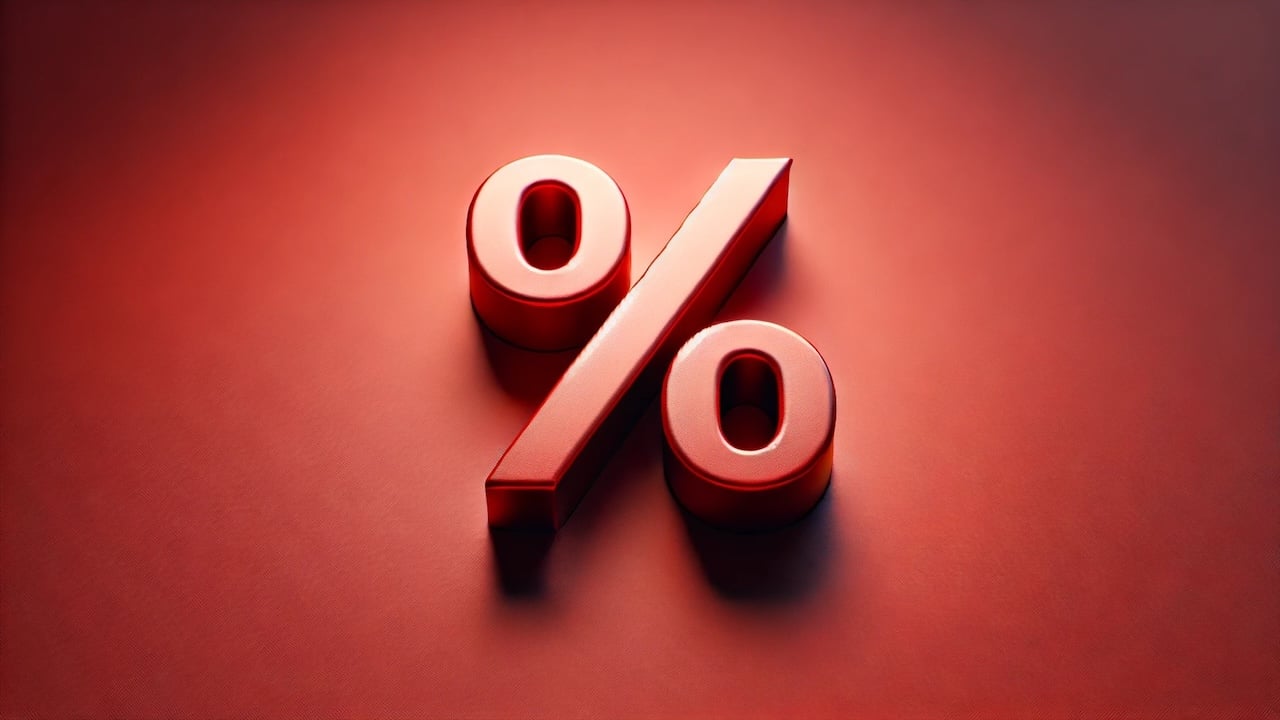(Mike Maharrey, Money Metals News Service) It’s clear that the Federal Reserve hasn’t won the inflation fight. With the CPI trending higher for four straight months, the markets aren’t pricing in another interest rate cut until September.
Isn’t a “higher for longer” interest rate environment bearish for gold?
The short answer is no because real interest rates are falling with price inflation on the upswing.
Why Do Higher Interest Rates Create Headwinds for Gold
Gold is a “non-yielding” asset, meaning it does not generate interest income or dividends. Its value is determined by price appreciation. Conventional wisdom is that investors turn to bonds and other yielding assets in a higher interest rate environment, creating headwinds for gold.
We saw this phenomenon play out when the Fed was hiking rates to battle price inflation a couple of years ago. Every time we got bad inflation data, gold sold off with the expectation of more rate increases.
But when the January CPI data came in higher than expected last week, gold’s price dip was short-lived, and it quickly recovered to $2,900. It appears that at least some investors have figured out that inflation isn’t going anywhere, and they need gold as an inflation hedge despite the higher interest rate environment.
Real Interest Rates Are Falling
There is another factor in play. With price inflation increasing, real interest rates are falling even as the Federal Reserve puts rate cuts on hold.
The real interest rate is simply the stated rate you see on the news adjusted for price inflation.
To calculate the real interest rate, you take the quoted interest rate and subtract CPI.
The Federal funds rate is currently set at 4.5 percent. When you factor in the CPI of 3 percent, the real rate is only 1.5 percent. (4.5-3=1.5). If the CPI moves to 3.5 percent and the Fed holds rates steady, the real interest rate will fall to 1.0 percent.
Note that in a low interest rate environment or if price inflation is particularly high, real interest rates can go negative.
For instance, if the Fed cut rates to 2 percent while the CPI remained at 3 percent, the real interest rate would be -1.0 percent.
Keep in mind that the CPI doesn’t tell the entire story of inflation. The government revised the CPI formula in the 1990s so that it understated the actual rise in prices. Based on the formula used in the 1970s, CPI is closer to double the official numbers. So, if the BLS was using the old formula, we’re looking at CPI closer to 6 percent. And using an honest formula, it would probably be worse than that.
This means that as price inflation creeps up, the opportunity cost of holding gold is dropping even if the Fed holds interest rates steady. (Opportunity cost refers to the interest you could have earned if you had bought a bond instead of a bar of gold.)
Will the Fed Hike Rates?
The Federal Reserve could counter falling real rates by pushing the federal funds rate higher. But so far, the central bank has given no indication that rate hikes are on the table. In fact, the consensus is that the Fed has merely put cuts on hold for the time being and will likely resume monetary easing in the fall.
Given the trajectory of price inflation and the fact that the central bank never did enough to slay the inflation dragon, the central bank probably should consider pushing rates higher to get price inflation under control.
Given the level of debt in the economy, coupled with all the malinvestments caused by well over a decade of artificially low interest rates, the economy can’t function even in a moderately tight interest rate environment. Simply put, the economy is addicted to easy money.
This is precisely why everybody is desperate for rate cuts, and the Fed delivered in December while simultaneously jawboning about caution and trying to dampen expectations of more rate cuts in 2025.
On the other hand, it’s clear that inflation remains stubbornly sticky.
Here’s how Reuters summed up the dilemma:
“Extreme bond market agitation has put the Federal Reserve in a bind. It can either cool long-term inflation fears or acquiesce to President-elect Donald Trump’s complaints about interest rates being “far too high.” It can’t do both and will likely opt to tackle the former, potentially setting up a running verbal battle with the White House over the coming year.” [Emphasis added]
The Reuters report goes on to say, “The Fed has routinely stated that containing inflation expectations is one of its primary roles,” and it’s “hard to imagine” the central bank will ignore signs of revived price inflation.
They can say that now, but it becomes easier to “imagine” when the economy starts to crack under the weight of high interest rates.
Simply put, the Fed needs to simultaneously cut rates and keep rates higher.
Good luck with that.
The bottom line is that even with price inflation warming up and rate cuts on hold, it is highly unlikely that the central bank will start raising rates.
If they do start talking more rate hikes, this would likely cause headwinds for gold. But given the current environment, inflation is in control, and real rates are falling.
This is bullish for gold and likely contributing to the push toward $3,000 per ounce.
Mike Maharrey is a journalist and market analyst for MoneyMetals.com with over a decade of experience in precious metals. He holds a BS in accounting from the University of Kentucky and a BA in journalism from the University of South Florida.

